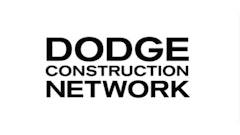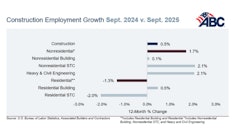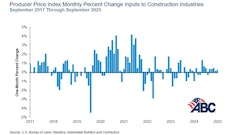
Policy uncertainty, rising material costs, and labor disruptions are reshaping the U.S. construction industry’s trajectory, according to JLL’s 2025 Construction Perspective: U.S. Mid-Year Update. While activity has slowed in many markets, the report points to significant opportunities for firms that plan strategically and stay flexible in the face of volatility.
“The construction industry is experiencing uncertainty that is affecting everything from material costs to labor availability,” said Louis Molinini, Head of Project and Development Services, Americas, JLL. “Despite these challenges, we’re seeing remarkable resilience in select sectors and regions that remain extremely active. It's a local game that rewards strategic capital planning more than ever.”
Growth Slows as Project Delays Mount
The report notes a shift in expectations, with many projects paused and construction spending forecasts lowered. Real construction spending growth is expected to remain near post-pandemic lows through 2026, a trend that could limit the industry’s ability to scale up quickly once conditions improve.
Development Patterns Remain Uneven
Public funding is driving growth in some sectors, while private investment is slowing as stakeholders recalibrate. Data centers, however, are bucking the trend — with spending on track to more than double from 2023 to 2026. Advanced manufacturing is also expected to remain active, even as timelines shift.
Material Prices Surge Again
What had been a modest decrease in costs has reversed. JLL forecasts construction input costs to rise between 7% and 12% in 2025 — potentially marking one of the largest annual increases in recent years. Projects tied to data centers and high-tech manufacturing face higher exposure due to supply chain dependencies and the delayed impacts of tariffs.
Labor Market Pressures Mount
The construction workforce is also under strain. Slower immigration growth — just 1%, down from the 3% average — is already affecting some regions. While the impact is muted today due to slowed activity, labor shortages are expected to significantly affect timelines and wages as demand picks up again in 2026.
“As we ramp up demand in 2026... the extent of the disruption will become readily apparent,” said Andrew Volz, Research Manager at JLL. “Labor retention and development will remain the primary concern of forward-looking contractors.”
Strategic Adaptation is Critical
The report emphasizes that while headwinds persist, organizations willing to adapt can gain a competitive edge. Key recommendations include:
- Focusing on high-growth sectors like data centers and advanced manufacturing
- Adjusting procurement and sourcing strategies to manage cost and labor risks
- Tailoring project planning to account for regional and sector-specific pressures
“Understanding that project exposures aren’t equal and local factors matter most for project outcomes is essential for success in today’s environment,” added Molinini.



















